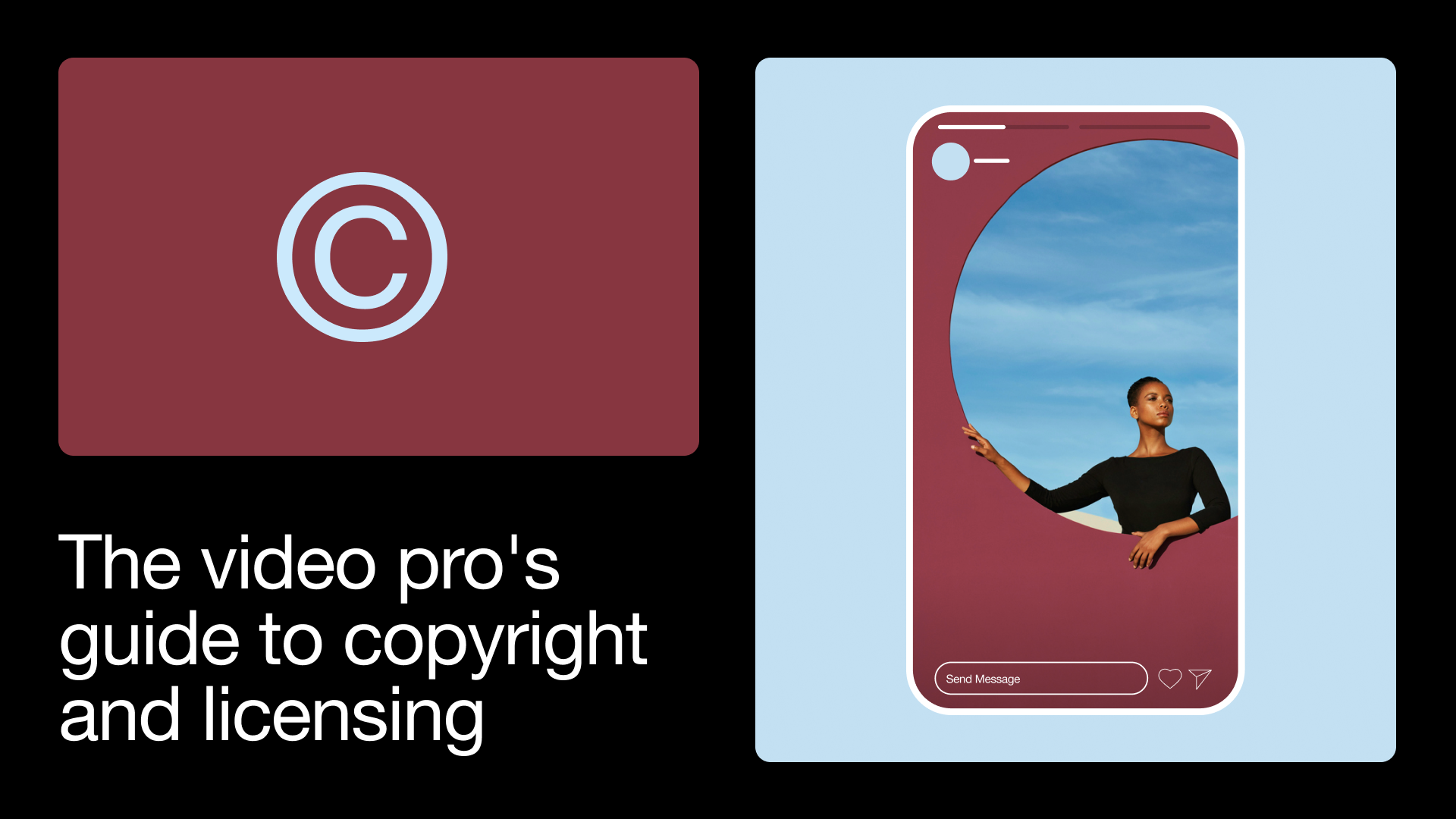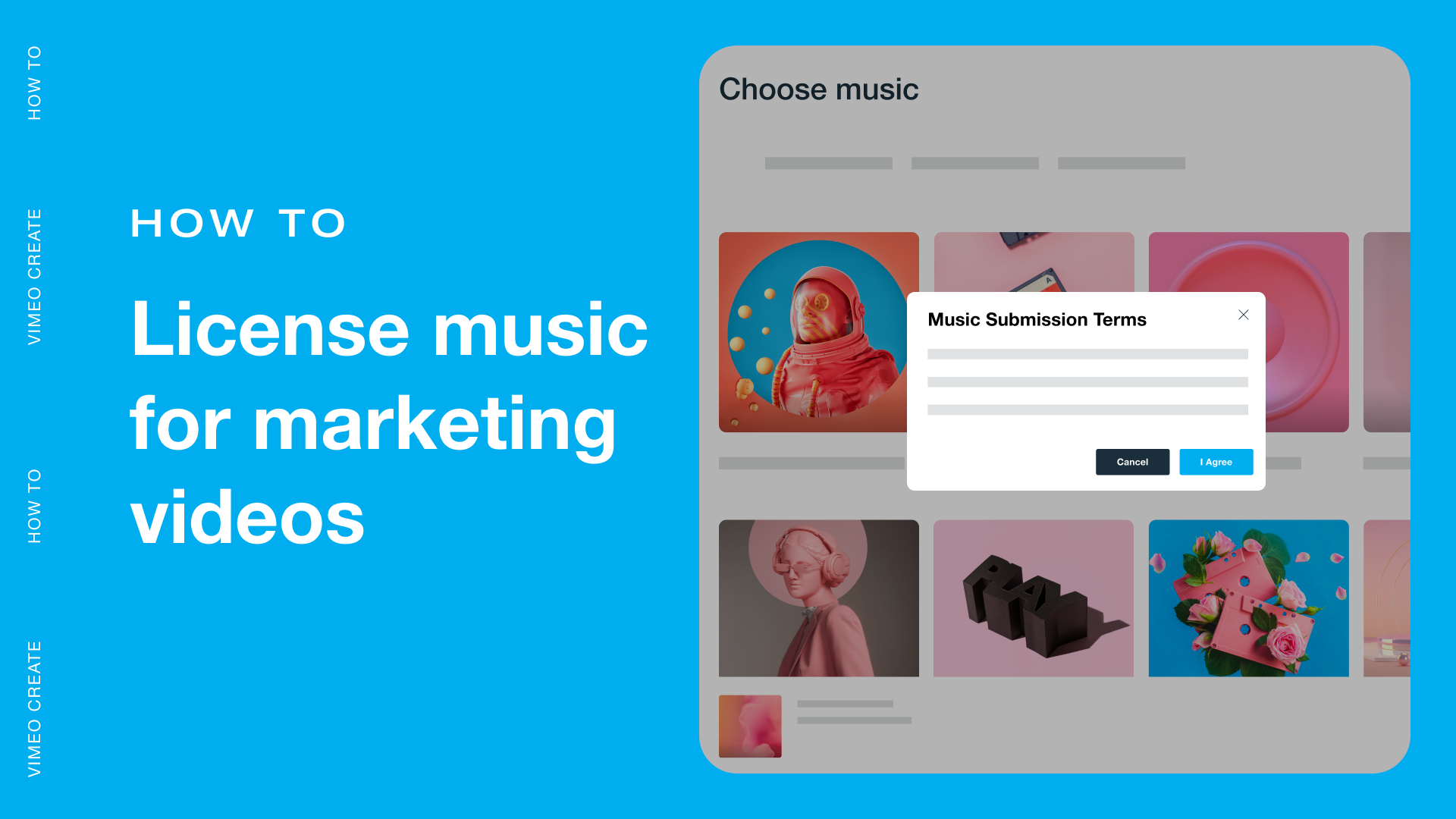When you release video content, you must consider regional distribution agreements and restrictions on content. Geo-blocking enables you to restrict access to certain locales to comply with copyright laws and serve appropriate content to regions with censorship regulations.
This article will explain how geo-blocking works, why streaming services enforce it, and its legal considerations. You’ll also learn how users bypass geo-restrictions so you know what to expect when they do.
Discover geo-blocking with Vimeo Streaming →
What is geo-blocking and where is it used?
Geo-blocking restricts content to or from specific geographic locations. Geo-allowing, on the other hand, refers to the act of permitting access to online content based on a user's geographical location. It's the opposite of geo-blocking, which restricts access.
When a user tries to access geo-blocked content, the streaming platform checks their IP address to determine which country they’re in. If they reside in any of the countries where that content is blocked, they won’t be granted access. If they are in an allowed region, or not in a blocked one, they typically won't see any indication that restrictions are in place. However, viewers in restricted areas will usually encounter an error message like "This video is not available in your region". Let’s explore some residency restrictions:
- In the European Union (EU), most forms of geo-blocking are prohibited thanks to their digital single market strategy. However, they still allow geo-blocking for some movies and TV shows.
- In the United States, there are no specific laws protecting or prohibiting geo-blocking.
- In China, geo-blocking is mandatory under the protections of their Golden Shield Project (also known colloquially as the Great Firewall), a restrictive internet access protocol employed by China through state-run ISPs. Learn how Vimeo Enterprise can help deliver video to China.
Vimeo Streaming, Zype, Uscreen, and other companies offer geo-blocking features to help prevent the sharing of live and on-demand videos in restricted regions. Geo-blocking features help you manage and enforce regional licensing agreements, ensuring that your video content is only available to viewers within the regions for which you have secured rights.
Explore geo-blocking with Vimeo Streaming →
Why do websites and streaming platforms geo-restrict content?
Here are a few of the reasons streaming services and video platforms like Netflix, Hulu, Dacast, Vimeo, and more use geo-blocking.
Copyright laws & Licensing Agreements
Each country has different copyright laws, but most enable creators to dictate where and when a video can play. For example, a creator might want to restrict the premiere of their new film to a specific region, and most countries have copyright laws that would protect their ability to do so. Geo-blocking enables streaming services to comply with those restrictions and broader licensing agreements. Without digital rights management (DRM) and geo-blocking, content could be pirated more easily, which can in turn hurt streaming profits and fail to protect content from unauthorized access.
Censorship
Some countries have censorship laws dictating the types of content citizens can watch, so streaming platforms use geo-blocking to serve those regions with censored videos. Similarly, they’ll geo-block access to mature videos in places where viewers must verify their age, like the EU and United Kingdom.
Audience targeting
Streaming services have audiences worldwide with different tastes and trends, so they may decide to highlight videos that cater to those audiences. For example, you might be able to watch La Deuxiéme Étoile on Netflix in France, but not in Thailand.
Privacy regulations
The EU has enacted several new privacy laws, like GDPR and the Digital Services Act, to protect user data. If a streaming service can’t comply with those regulations, they’ll use geo-blocking to avoid EU countries entirely.
Pricing differences
Pricing differences can be used to make content more accessible to different areas of the world, where incomes and inflation differ widely. It occurs when streaming platforms sell videos or subscriptions at different prices in different countries, which allows them to set reasonable prices in each market. For example, a premium Netflix subscription in the United States costs $25, but in India — where the cost of living is lower — it’s only ₹649, equivalent to $7.50.
How does geo-blocking work? Understanding the basics and impact
The actual mechanism behind region-blocking content is surprisingly simple. The system primarily checks a viewer's internet address (IP address) to figure out their approximate geographic location, like their country or region. This location check usually happens with the help of data provided by Content Delivery Network (CDN) partners – the services that help deliver video content efficiently worldwide.
Crucially, these checks are handled centrally within Vimeo's backend systems whenever playback access is requested. This means the geo-blocking rules you set are enforced not just on the standard web player, but also when viewers watch through:
- Vimeo App & Web / Browser Playback & Vimeo Embedded Player Playback
- Custom Players: Even third-party or custom players that use direct links to Vimeo's video files (like HLS or DASH manifests) must pass through the backend check.
- Downloads: If someone tries to use a direct download link from a geo-restricted region, they will encounter an error page instead of accessing the file.
The only common exception is simulcasting. When you simulcast your stream to other platforms (like YouTube or Facebook), the video is pushed into their systems, bypassing Vimeo's geo-blocking checks on those external platforms.
IP addresses
Every device on the internet has a specific IP address used to send and receive data. Streaming services use a method called Geo IP to determine where these IP addresses originate from. With this data, platforms can serve the appropriate content for that region and block access to anything restricted.
Mobile considerations:
When watching on a mobile device (including the Vimeo app), the location check works similarly. As your device connects to view the video, the request passes through Vimeo’s CDN partners. These partners identify the connection's IP address and include the estimated geographic location information derived from it within the data sent to Vimeo's servers. Vimeo's system then uses this location information provided by the CDN to apply the creator's geo-blocking rules.
Global positioning system (GPS)
When a user accesses a streaming service on a mobile device, the service can access their GPS data to determine their geographic location more precisely than with Geo IP. Then, it can serve them content based on what’s available for their location and even change it as they cross into different regions.
Is geo-blocking legal?
Yes, although you should check the laws and regulations for each region before enabling it. This is especially true in United Kingdom and EU countries, where geo-blocking may conflict with some user protections under provisional legal approval. The Single Digital Market strategy already restricts geo-blocking for e-commerce and could apply to video and live streaming services in the future.
You’ll sometimes want to enable geo-blocking specifically to adhere to legal precedent. For example, general copyright laws and specific licensing agreements allow creators and providers to determine which countries their videos can appear in and when.
How users bypass geo-blocking
Not everyone agrees with geo-blocking restrictions. Some viewers actively seek ways around them, often to watch content unavailable in their region or to access services at prices offered in different countries. To bypass these geographic limitations, the two most common tools users turn to are VPNs and proxy servers.
Virtual private networks (VPNs)
VPNs are service providers that encrypt all the data users send through their internet connection. They also offer a network of global servers that users route their connections through, effectively changing their IP address. VPN services are legal in most countries, but some, like China and Iran, only recognize providers with government contracts.
Proxy servers
Proxy servers work as intermediaries, taking requests from one IP address and forwarding them with another. By changing the IP address, they can “spoof” it to resemble one from a different country, effectively bypassing geo-blockers.
Proxy servers aren’t as common as VPNs due to their complexity. Employers usually use them to regulate employee internet traffic and protect against certain security threats.
What are some use cases for geo-blocking?
Sports
Sports organizations can use geo-blocking to enforce regional broadcast rights and manage "blackouts." Geo-blocking helps ensure their content is primarily accessed within their target region, respecting local broadcasting norms. Leagues often sell exclusive rights to different broadcasters in different territories. Geo-blocking ensures that only viewers in the correct region (or outside a blacked-out region) can access the live stream via a specific service.
For example, the NBA uses geo-blocking extensively for its League Pass service to manage regional blackouts based on local broadcast deals. Fans in a blacked-out area trying to live stream sports may need to watch via the local rights holder, while those elsewhere can stream via League Pass. Similar practices are common in leagues like the NFL and English Premier League.
The Canada Games uses Vimeo as its exclusive live stream platform provider. Geo-blocking could be used here to manage access based on regional broadcast partnerships or staggered event releases across Canada.
Media and entertainment
Entertainment companies use geo-blocking to manage content licensing rights that are often sold on a country-by-country or regional basis. Film studios or production companies might have different distribution agreements for different territories, requiring platforms to restrict access accordingly. This also applies to phased rollouts of new content.
For example, The National Theatre offers recordings of stage productions online. Geo-blocking would be essential to comply with distribution rights that may vary internationally for performances or underlying works.
Independent creators and streamers may license content or create originals where distribution rights might be limited geographically, necessitating geo-blocking. Digital creators might also use it for timed regional releases.
E-learning and fitness
Selling courses or content subscriptions tailored to specific markets. Instructors or platforms might have different pricing, language versions, or certifications relevant only to certain regions. Geo-blocking ensures the correct offering is presented and purchased by the appropriate audience.
Fitness instructors or platforms like SotoMethod might use geo-blocking to manage regional challenges, comply with different fitness and health regulations, or offer region-specific pricing or content.
Corporate uses
Geo-blocking is highly relevant for internal communications, training, or marketing in large multinational corporations. An enterprise company could use geo-blocking for internal training videos containing sensitive information or procedures relevant only to employees in specific countries (e.g., complying with local labor laws or regulations).
A global product launch might involve virtual events or reveal videos restricted to specific sales regions until a global release date. Compliance videos addressing specific regional legal requirements could be geo-blocked to ensure only employees in that jurisdiction view them.
These examples illustrate how geo-blocking, a feature available within Vimeo Streaming, serves critical functions across various industries by helping content owners comply with licensing agreements, protect content, and target specific regional audiences.
See if Vimeo Streaming is right for you →
Reach the right audience with Vimeo
Navigating the geo-restrictions and copyright laws involved in running a streaming service requires a lot of careful planning. That’s why Vimeo gives you all the tools you need to make region-blocking work for you, meeting both distribution agreements and legal obligations.
With Vimeo video hosting, you can set up geo-blocking (also known as Regional Availability within the platform) to restrict your content (for both VOD and live events) to or from certain countries manually. Or, you can set aspects like the content rating to let us handle compliance wherever needed. Learn more at our Help Center.



